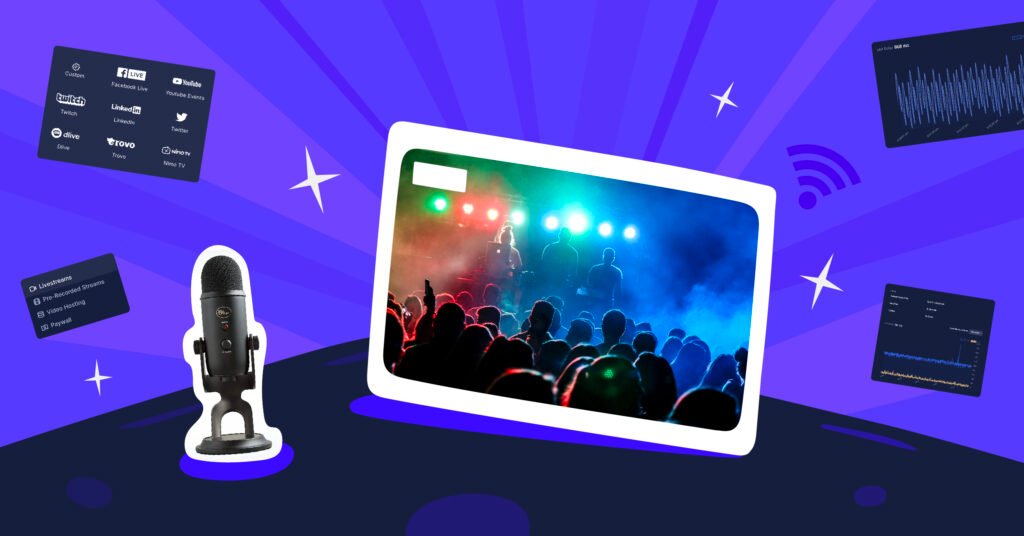The Ultimate Guide to Church Live Streaming: Connecting Your Congregation Online

In today’s digital age, live streaming has become an essential tool for churches to reach and engage their congregations, both locally and globally. Whether it’s for members who can’t attend in person, new visitors exploring your church, or those who are part of your online community, live streaming offers a powerful way to extend your ministry beyond the walls of the church. This guide will walk you through the key aspects of setting up and optimizing a successful church live stream.
Why Live Stream Church Services?
- Accessibility
- Live streaming allows members who are unable to attend in person—due to illness, travel, or other reasons—to still participate in the service. It also provides access for those who live far away or are homebound.
- Extended Reach
- By streaming your services online, you can reach a wider audience, including people who might not otherwise visit your church. This is especially valuable for outreach and evangelism.
- Engagement
- Live streaming enables real-time interaction, allowing viewers to engage with the service through comments, prayers, and digital donations. This helps maintain a sense of community even when people are physically apart.
- Archiving and On-Demand Access
- Live streams can be recorded and archived, allowing members to watch services at their convenience. This is particularly helpful for those who missed the live event or want to revisit the sermon.
Read Also: Guide to Property Management for Short-Term Rentals
Key Components of Church Live Streaming
- Equipment
- Camera: Invest in a quality camera that can capture clear video. Depending on your budget, you might choose a single camera or a multi-camera setup for different angles.
- Microphone: Good audio quality is crucial. Use microphones that can capture clear sound from the pastor, choir, and congregation.
- Streaming Software: This software encodes your video and audio for live streaming. Popular options include OBS Studio (free) and paid options like Wirecast or vMix.
- Internet Connection: A stable, high-speed internet connection is essential to prevent interruptions or lag during the stream.
- Platform
- Choose a platform to host your live stream. Popular options include:
- YouTube: Free and widely accessible, with options to archive videos.
- Facebook Live: Offers easy sharing and engagement features.
- Church Online Platform: A specialized platform designed for church services, offering features like live chat, prayer requests, and donation links.
- Zoom: Useful for more interactive services where you want to see and hear from participants.
- Choose a platform to host your live stream. Popular options include:
- Lighting
- Ensure your worship space is well-lit, particularly the areas where the pastor and choir are positioned. Natural light is ideal, but if that’s not possible, consider using LED lights to brighten the space.
- Engagement Tools
- Incorporate tools to engage your online audience:
- Live Chat: Enable live chat so viewers can interact during the service.
- Digital Giving: Provide links or buttons for online donations.
- Interactive Elements: Encourage viewers to share prayer requests, respond to polls, or participate in discussions during the stream.
- Incorporate tools to engage your online audience:
Steps to Setting Up a Church Live Stream
- Plan Your Setup
- Determine the physical setup, including camera angles, microphone placement, and lighting. Decide on the software and platform you’ll use for streaming.
- Test Your Equipment
- Before your first live stream, run tests to ensure everything is working correctly. Check the video quality, audio clarity, and internet speed to avoid technical issues during the service.
- Create a Streaming Schedule
- Set a regular schedule for live streaming services, such as Sunday mornings and midweek Bible studies. Promote this schedule on your church’s website, social media, and through email newsletters.
- Promote Your Live Stream
- Let your congregation and community know about your live streaming services. Use social media, email, and your church’s website to spread the word. Encourage members to invite friends and family to join online.
- Engage Your Online Congregation
- During the live stream, acknowledge your online viewers, and encourage them to participate in the service. Read out prayer requests, respond to comments, and make the experience as interactive as possible.
- Monitor and Adjust
- During the live stream, monitor the feed to ensure everything is running smoothly. After the service, review the stream to identify areas for improvement, such as audio levels or camera angles.
Tips for a Successful Church Live Stream
- Keep it Simple: Start with a basic setup and gradually invest in more equipment as your streaming needs grow.
- Focus on Audio Quality: Viewers are more likely to tolerate less-than-perfect video, but poor audio can make the service difficult to follow.
- Engage with Viewers: Actively engage with your online audience to make them feel like part of the community, even if they’re not physically present.
- Encourage Sharing: Ask viewers to share the live stream with their networks to help spread your message further.
Conclusion
Church live streaming is a powerful way to expand your ministry and stay connected with your congregation, no matter where they are. By carefully planning your setup, choosing the right platform, and engaging your audience, you can create a live streaming experience that enhances your worship services and brings your community closer together. Whether you’re new to live streaming or looking to improve your current setup, following these guidelines will help you create a successful and impactful church live stream.






